Champagne Eugène III
(An Online Virtual Visit)
by
Terry Sullivan
Images provided by
Champagne de Barfontarc and Champagne Eugène III
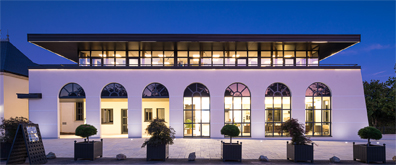 This article describing Champagne Eugène III is based on an online interview, online data and photos supplied by Champagne de Barfontarc and Champagne Eugène III. The article was written during the time of the world-wide 2020 pandemic. We asked Sonia Pereira, Export Sales Manager several questions about Champagne Eugène III.
This article describing Champagne Eugène III is based on an online interview, online data and photos supplied by Champagne de Barfontarc and Champagne Eugène III. The article was written during the time of the world-wide 2020 pandemic. We asked Sonia Pereira, Export Sales Manager several questions about Champagne Eugène III.
Summary: Visitors to the Cote des Bar Champagne region, can learn about cooperatives and champagne styles of two brands Champagne de Barfontarc and Champagne Eugène III. There are several wine tour experiences.
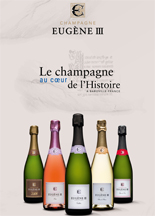 Just over 11 km (under 7 miles) from Clairvaux Abbey lies the champagne house brand Champagne Eugène III. This Cistercian abbey was founded in 1115 by Bernard of Clairvaux. During the 12th century, vineyards were planted and Bernard of Clairvaux constructed cellars. Eugène III was a monk from Clairvaux Abbey and a disciple of Bernard of Clairvaux. Thus the champagne brand Champagne Eugène III has its namesake deep in the history of the place of the village of Baroville.
Just over 11 km (under 7 miles) from Clairvaux Abbey lies the champagne house brand Champagne Eugène III. This Cistercian abbey was founded in 1115 by Bernard of Clairvaux. During the 12th century, vineyards were planted and Bernard of Clairvaux constructed cellars. Eugène III was a monk from Clairvaux Abbey and a disciple of Bernard of Clairvaux. Thus the champagne brand Champagne Eugène III has its namesake deep in the history of the place of the village of Baroville.
The champagne house is a cooperative established in 1962. During those early years the cooperative was a pressing center. Then the cooperative developed their own brand of champagne, Champagne de Barfontarc. The brand Champagne Eugène III was created in 2017.
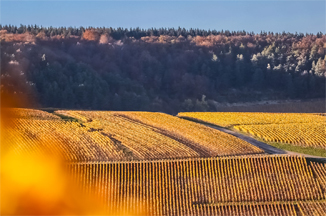 Vineyards
Vineyards
The vineyards comprise of 127 Ha (314 acres) with 90% of the vineyards planted with Pinot Noir while 10% of the vineyards is planted with Chardonnay. The vineyards are spread around the towns of Arconville, Arsonval, Baroville, Fontaine, Montier en L’Isle, Proverville, Rouvres les Vignes and Tranne.
The members of the cooperative who farm the vineyards have been with the cooperative for over a half century. Now it is common to have the original member’s children and grandchildren working the land. The 50 cooperative members meet with the champagne winemaking team to discuss growing practices. When the winegrowers deliver the grapes to the cooperative, the grapes are checked for pH, maturity, quality and weight.
Wine Trail Traveler asked, “What are the advantages for growers to belong to the cooperative rather than being on their own?”
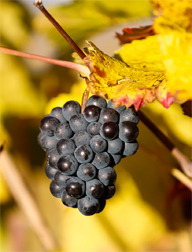 Sonia Pereira: “It could be for several reasons: for a lack of competences in producing wines or it could be for financial reasons or both. You know, some winegrowers have the competence to care for the grapes in the vineyards, but not for creating and producing champagne. It’s another job; you can be a winegrower but not a winemaker. So in this case it’s very good to collaborate with an oenologist and in a coop. All the steps of of the champagne making process is included. We are 20 employees specialized to create a wide range of champagnes and promote and sell all the products all over the world.”
Sonia Pereira: “It could be for several reasons: for a lack of competences in producing wines or it could be for financial reasons or both. You know, some winegrowers have the competence to care for the grapes in the vineyards, but not for creating and producing champagne. It’s another job; you can be a winegrower but not a winemaker. So in this case it’s very good to collaborate with an oenologist and in a coop. All the steps of of the champagne making process is included. We are 20 employees specialized to create a wide range of champagnes and promote and sell all the products all over the world.”
Wine Trail Traveler also asked what are the winegrowers most enjoyable aspects of the vineyards?
Sonia Pereira: “Perhaps the most enjoyable aspects is to live in small villages, very closed to the creation of Clairvaux Abbey. Where the history of the cistercian monks included winemaking. Also the vineyards offer the growers a quiet and a perfect subsoil for the Pinot Noir grapes.”
Winemaking
Grapes received at the cooperative are a mix of the vineyards from the villages in the Cote des Bar. The winemaking team aims to create fruity champagnes that are typical of the terroir of the southern part of the Champagne region.
The grapes are pressed by four electro pneumatic pressing machines. The juice from the pressing is fermented in tanks and barrels. After bottling, off site, the wine is placed in temperature controlled cellars to age for 15 months for non-vintage champagnes and 36 months for vintage champagnes. Gyropalettes are used to riddle the bottles. Disgorgement takes place offsite at a company that specializes in disgorgement. Bottles are then labeled and packed in boxes.
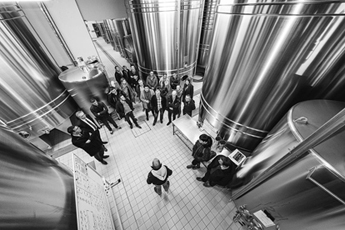 Wine Tourism
Wine Tourism
Wine enthusiasts that visit the cooperative have a choice of several experiences. The Cellar Visit & Tasting includes a guided tour of the winery and cellars and tasting three to five champagnes.
The Champagne Workshop includes an introduction to oenology, a visit to the estate and tasting of five champagnes. The Guided Walks in the Champagne Region is highlighted by a 45 minute walk through the vineyards, winery visit and tasting of five champagnes.
For those wine enthusiasts that want to have an adventure in the process, they can select the Harvest Experience. This includes meeting at the cooperative, guided tour of the vineyard, harvesting grapes, guided tour of the winery and cellars, glass of champagne and lunch with the harvesters.
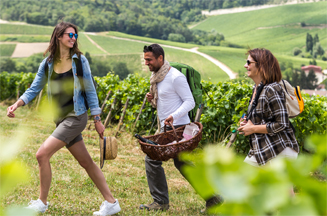 The Sparkling Picnic in Champagne offers a picnic basket for two with a cold lunch, bottled water, a bottle of champagne, flutes, cutlery, napkins and tablecloth.
The Sparkling Picnic in Champagne offers a picnic basket for two with a cold lunch, bottled water, a bottle of champagne, flutes, cutlery, napkins and tablecloth.
Individuals and groups are welcome all year long.
Food and Champagnes
We asked what types of local foods pair well with the champagnes.
Sonia Pereira: “For French aperitifs, my favorite is gougères and champagnes, but it could be pizza. A dessert (fruit pie or sorbets ices) can pair with Rosé champagne. Indian food, red meat pairs with Blancs de Noirs. Oysters or white fish pairs with Blanc de blancs.”
Gougères is a French pastry made from different cheeses, often Gruyère and choux pastry.
When traveling through the Cote des Bar Champagne region, consider a stop at the cooperative that crafts Champagne de Barfontarc and Champagne Eugène III champagnes. Wine enthusiasts have several experiences to select.
Article written October 2020
Visit these tour operators that partner with Wine Trail Traveler.
 |
||||
France
|
France
|
France | SmoothRed London, England, United Kingdom |


